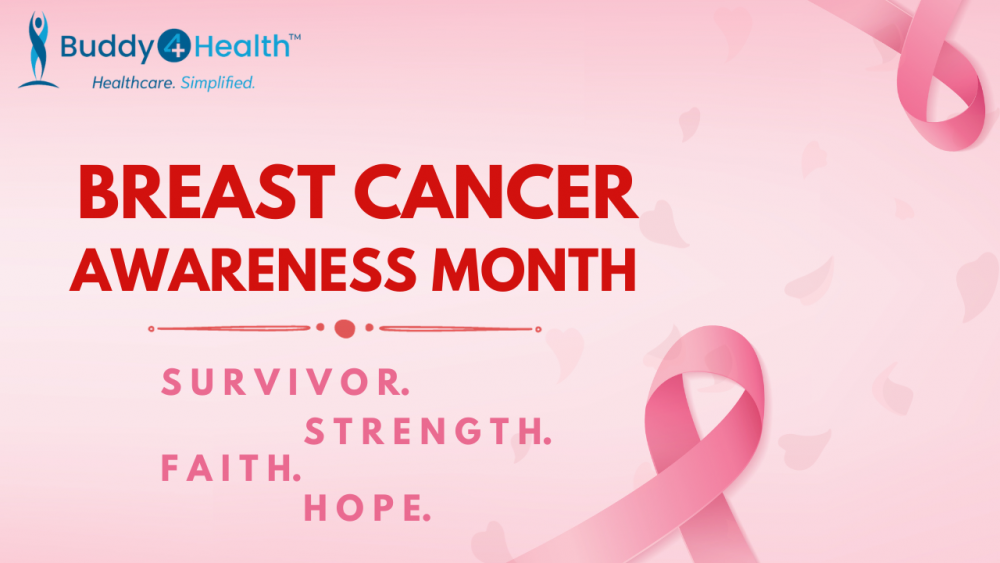

Breast cancer is a global health concern that affects millions of women and, in some cases, men. It's a topic that is particularly prominent in the month of October, known as Breast Cancer Awareness Month. In this comprehensive blog, we will delve into the four major aspects of breast cancer: what it is, why it's celebrated in October, signs and symptoms, risk factors and prevention, and the importance of breast cancer screening.
Breast cancer is a type of cancer that originates in the cells of the breast. It typically starts in the milk ducts or the lobules that supply the ducts with milk. While it's more commonly diagnosed in women, men can also develop breast cancer, though it's considerably less frequent.
October is designated as Breast Cancer Awareness Month, and it's celebrated globally through various events and campaigns. But why October? The month serves as a dedicated time to raise awareness about breast cancer, promote early detection, and support research for finding a cure. This tradition began in the early 1980s when breast cancer advocacy groups decided to set aside a specific time to increase awareness.
Throughout October, various activities and initiatives take place, such as fundraising events, educational programs, and the famous "pink ribbon" campaign, which aims to spread the message of early detection and support for those affected by breast cancer.
Early detection of breast cancer is vital for successful treatment. The sooner breast cancer is diagnosed, the better the chances of effective treatment and survival. Here are some of the common signs and symptoms to watch out for:
The presence of a new lump or mass in the breast or underarm can be an indication of breast cancer. Not all lumps are cancerous, but any new lump should be evaluated by a healthcare professional.
If you notice unexplained changes in the size or shape of your breast, it's essential to seek medical advice.
Unexplained pain in the breast or nipple, especially if it's persistent, should be evaluated by a healthcare provider.
Abnormalities in the skin over the breast, such as redness, dimpling, or puckering, can be indicative of underlying breast cancer.
Nipple discharge, other than breast milk, can be a sign of concern and should be examined by a healthcare professional.
Swelling or lumps in the armpit or collarbone area can be a sign that breast cancer has spread to nearby lymph nodes.
If you notice any of these symptoms, it's crucial to consult a healthcare professional for further evaluation. Remember, not all breast changes or lumps are cancerous, but it's always better to be safe and have them checked.
While breast cancer can affect anyone, certain risk factors can increase the likelihood of its development. Being aware of these risk factors is essential for both prevention and early detection. Some of the risk factors include:
The risk of breast cancer increases with age. The majority of breast cancer cases occur in women over 50.
A family history of breast cancer can increase your risk, especially if close relatives (mother, sister, daughter) have been affected.
Some individuals carry genetic mutations, such as BRCA1 and BRCA2, that significantly increase the risk of breast cancer.
Long-term use of hormone replacement therapy, particularly estrogen and progesterone, can be associated with a higher risk of breast cancer.
Previous radiation therapy to the chest or face can increase the risk of breast cancer.
Obesity, excessive alcohol consumption, and a lack of physical activity are lifestyle factors that can contribute to an increased risk.
To lower the risk of breast cancer, individuals can take proactive steps, including:
Obesity is a risk factor for breast cancer, so maintaining a healthy weight through a balanced diet and regular exercise is beneficial.
Reducing alcohol consumption or avoiding it altogether can lower the risk.
Engaging in regular physical activity, such as brisk walking or other moderate exercises, can contribute to breast cancer prevention.
If possible, consider breastfeeding, as it may reduce the risk of breast cancer.
For individuals with a strong family history of breast cancer, genetic testing can provide valuable information about their risk and guide preventive measures.
Regular screening and early detection play a pivotal role in improving breast cancer outcomes. Early-stage breast cancer is often easier to treat and has a higher chance of a full recovery. There are three primary methods for breast cancer screening:
Mammograms are X-ray images of the breast and are the most common method of breast cancer screening. They can detect abnormalities, such as lumps or masses, that may not be felt during a physical exam. The frequency of mammograms depends on age and risk factors, so it's essential to follow recommended guidelines.
These are manual examinations performed by a healthcare professional. During a clinical breast exam, a healthcare provider will carefully feel for lumps or other abnormalities in the breast.
Regular self-checks are a valuable tool for identifying changes in the breasts. While self-exams can't replace professional screening, they empower individuals to monitor their breast health and report any changes to their healthcare provider.
Breast cancer is a significant health concern that affects millions of individuals worldwide. Breast Cancer Awareness Month in October provides an opportunity to educate ourselves and support those affected by this disease. By understanding what breast cancer is, recognizing its signs and symptoms, addressing risk factors, and prioritizing regular screening, we can contribute to a world where breast cancer is both treatable and, ultimately, preventable. Early detection, awareness, and research are key to improving the outlook for those impacted by breast cancer, and every October, we take important steps toward achieving this goal.